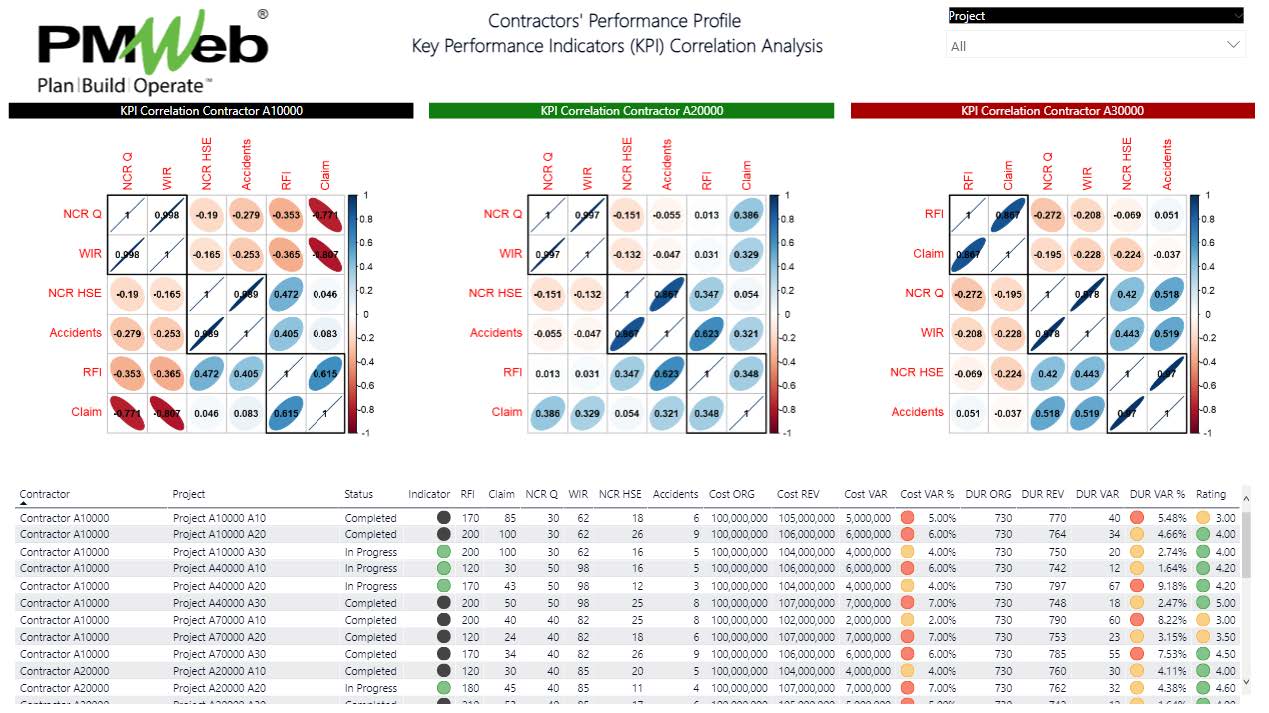The paper titled “Skills and Knowledge Requirement for Project Control Professionals” by Allan Crow, Vincent Sovis and Harish Chopra provides a comprehensive outline of how organizations can build their project control team for capital construction projects. The paper aims to specifically address the skills and responsibilities for the various project control roles which are aligned with AACE International guidelines.
The paper lists the different AACEI processes that the project control functions should address. Those include Project Scope and Execution Strategy Development, Schedule Planning and Development, Cost Estimating and Budgeting, Resource Planning, Procurement Planning, Value Analysis and Engineering, Risk Management, Project Control Plan Implementation, Project Cost Accounting, Progress and Performance Measurement, Project Performance Assessment, Forecasting, Change Management and Project Historical Database Management. Each one of those processes includes different business processes required to produce deliverables which could be the input needed for other processes.
Using a Project Management Information System (PMIS) solution like PMWeb, all project control needed business processes can be digitalized. This can be achieved by creating the template needed to capture the information required for each process as well as assigning the workflow to map the sequence of initiate, review, share and approve tasks required to perform those processes. Since cost is an integral project control function, those workflows should also embed the approval authority levels as defined in the delegation of authority (DoA) matrix.
To start with, it is important to understand what roles are needed for an effective and comprehensive project control function for any organization involved in delivering capital construction projects. Next, there is a need to define the line of authorities for those roles to establish the responsibilities for performing the different project controls business processes. PMWeb organization module helps to map the project control function organization chart.
The chart can then be assigned with resources that can best fulfil the knowledge and skills required for each role. Those roles include Manager Project Controls, Project Controls Manager, Senior Cost Engineer, Cost Engineer, Senior Cost Controller, Cost Controller, Cost Accountant, Estimating Manager, Chief Estimator, Senior Estimator, Estimator, Lead Planner, Lead Scheduler, Planner, and Scheduler. Some organizations might also include the roles for Risk Manager, Data Manager, Document Control Manager and Document Controllers. Of course, there should also be the roles for the team responsible for managing the PMIS like PMWeb.
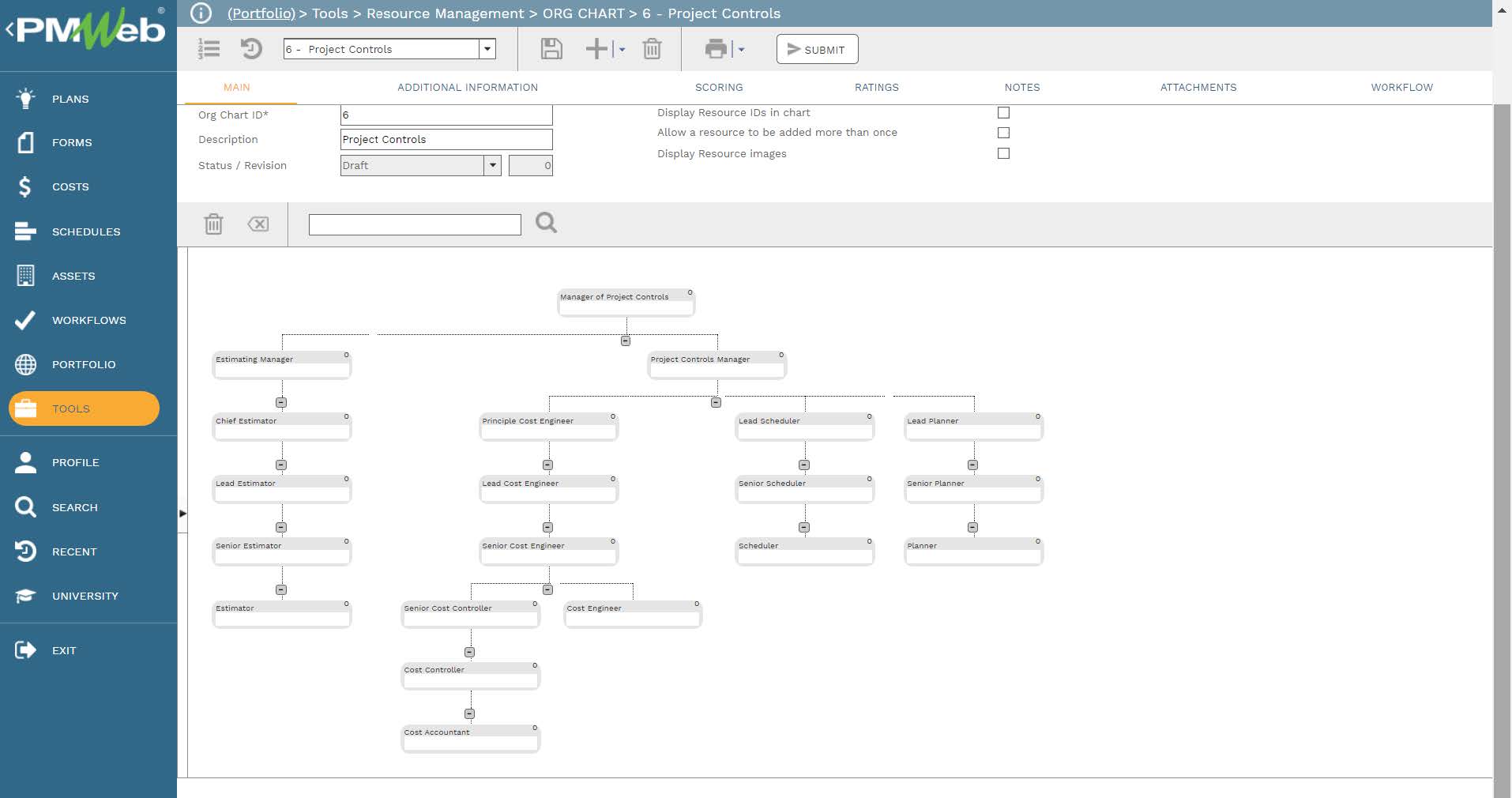
To ensure that each assigned resource has the skills, knowledge and competency needed for each project control role, it is highly recommended to have a pre-defined job description template for each project control role to detail specific responsibilities associated with the role, list of skills, experience, and qualifications required as well as measurable performance criteria of that role. Using PMWeb custom form builder, create a Job Description template for each possible project control role. The form details the role title and purpose as well as all it includes tables to list the role responsibilities, relationships with stakeholders, skills and key competencies, experience, qualifications, personality, and performance criteria. For all tables included in the job description form, a score field is added to assess on a 5-point scale how the selected resource for that role can fulfill those requirements. This ensures that the right resources are selected for the project control team.
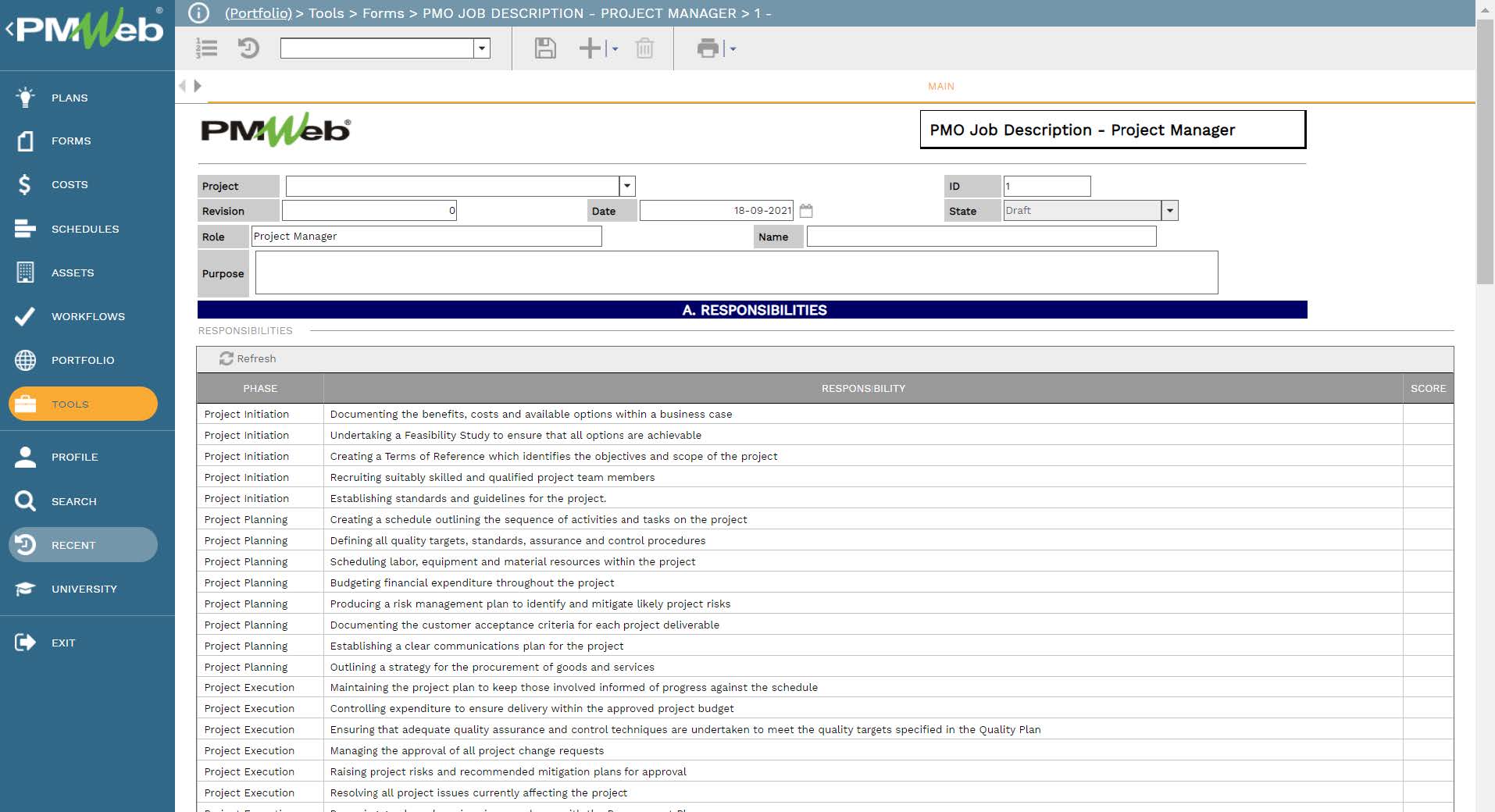
The next step is the digital transformation of the different project control business processes required for managing capital construction projects. This requires aligning the AACEI project control best practices with the business processes digitalized using PMWeb. This requires creating the input templates needed to manage each business process. Most of the project control business processes come ready out of the box when PMWeb is used. Those include control accounts, stage gates, cost database, cost estimate, capital budget, budget requests, commitments, potential change orders, change orders, interim progress invoices, miscellaneous. payments made and received, funding sources and authorizations, forecast, risk register, schedule, resource requirements, timesheets, daily reports, meeting minutes, issues, procurement bid packages, among others.In addition, PMWeb visual custom form builder enables creating any other business process that might not be readily available in PMWeb. Those templates can be designed in any language including non-Latin languages. Examples of those custom-built templates include non-conformance reports, extension of time requests, interface agreements, value engineering proposals, insurance certificates and bonds, etc.
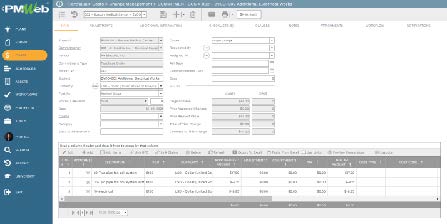
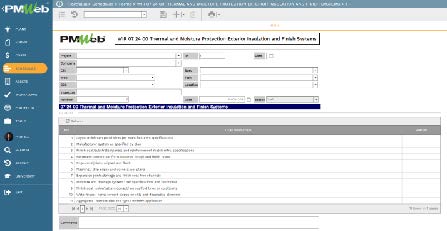
Each business process template is assigned a workflow to automate its execution. This ensures that all tasks required to submit, review, and approve each business process transaction are mapped to the individuals who have been assigned roles for performing those business processes. Those workflows embed the conditions needed to fulfill the authority approval levels, which is usually defined in the delegation of authorities (DoA) matrix.
This automation of business processes also enables capturing the actual history of each transaction review and approval workflow tasks. The captured workflow data includes the actual action data and time, done by who, action taken, comments made and whether team input was requested.
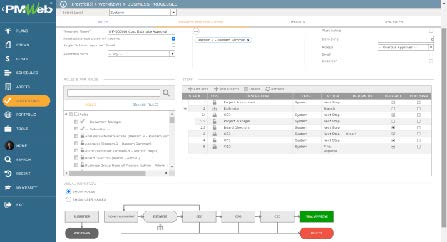
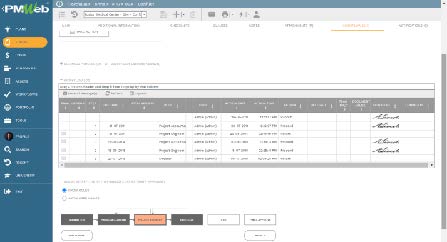
For each transaction of each business process, there is always the need to attach documents that supports the content of what is being communicated. Those documents could be drawings, pictures, specifications, videos, and other type of documents. In addition, there might be a need to add links to other transactions of the same business process or other business processes that are associated or relevant to the communicated transaction. Further, links to emails that were imported to PMWeb or URL links to documents stored in other document management repositories or other websites can be also added. It is highly recommended to add details to each attached document to better explain to the reader what is being attached and viewed.
As a best practice, all attached supportive documents, regardless of their type or source, get uploaded and stored on PMWeb document management repository. PMWeb allows creating folders and subfolders to match the physical filing structure used to store hardcopies of those documents.
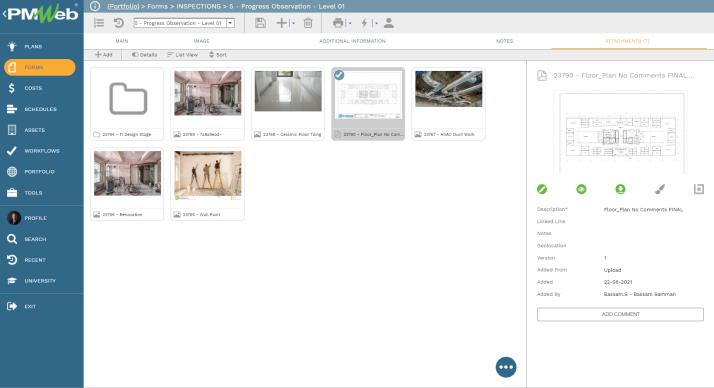
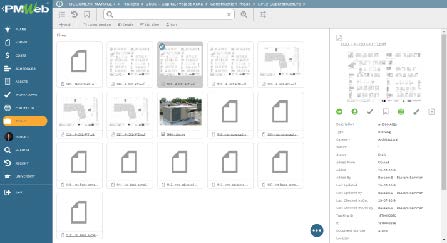
For transactions of business processes that need to be formally communicated to the other entities who are part of the project delivery team members or organizations, output templates need to be designed in a format that is aligned with each project’s branding and communication requirements. Those output templates are designed to include all data fields that need to be communicated, including the option of listing the status of the submit, review, and approve workflow tasks as well as the documents that were attached to the transaction. Of course, there is also the option to include a checklist of the items that need to be verified for each business process type. The output templates allow users to save it in a PDF file format so it can be digitally signed or print it to be wet-signed and stamped.
PMWeb is one of the few PMIS solutions that comes ready with more than 150 forms, reports and dashboards that can be immediately deployed by the users to share and formally communicate the information captured in the business processes managed in PMWeb. Of course, there is also the option to modify those forms, reports, and dashboards to suite each project communication requirements.

In addition, registers or logs of each business process transaction can be automatically generated and shared with project stakeholders to provide them with real-time single version of the truth of those transactions. Those reports can be designed to group, sort, summarize and filter the transactions of each business process in the desired form and format. Of course, those reports are also designed in a format that aligns with each project’s branding and communication requirements.

Sometimes, there is also the need to generate reports that require capturing data from transactions of different business processes to provide a better insight on certain project control function. For example, when it comes to reporting the status of contracts for each specific project, there is a need to communicate the original awarded contract value, change orders issued to date, the approved and pending change orders, interim payment certificates issued to date, the amount of retainage held on those payments, and the balance amount remaining for each contract. Getting this report requires data from the contract, change order and progress invoices modules.
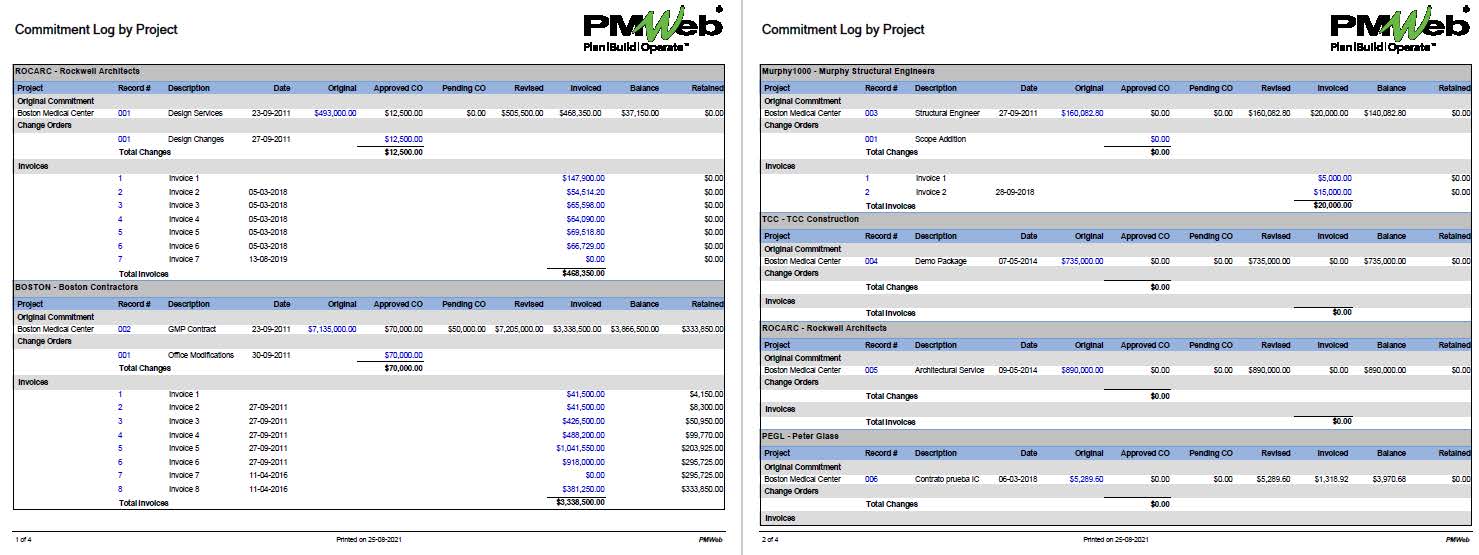
Another example of required project control reports on capital construction projects would be having a report that provides an overall cost performance status of all projects that the entity is managing. This requires having a report that groups projects by the program they relate to. Then using PMWeb modules for budget, budget adjustments, commitments, change orders and progress invoices, the cost worksheet report is generated. For each project, the report details the original budget, budget adjustments, anticipated budget, awarded contracts, approved change orders, pending change orders, percent to complete, anticipated cost at completion, variance at completion and actual cost invoiced to date.
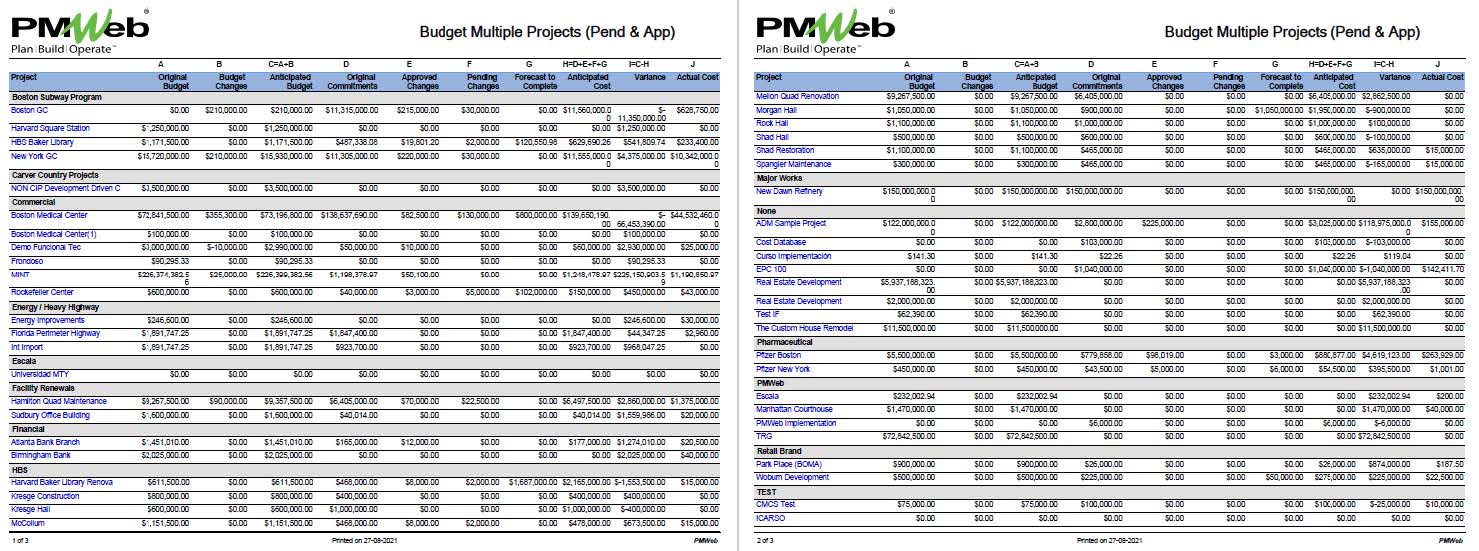
In addition, the data captured in each transaction of each project control business process that relates to one of the areas of project control functions, whether this is cost, schedule or risk, can be aggregated and reported on in a graphical format. In other words, different dashboards can be created for each one of those project controls functions to provide stakeholders with an oversight of how this project control function is performing.
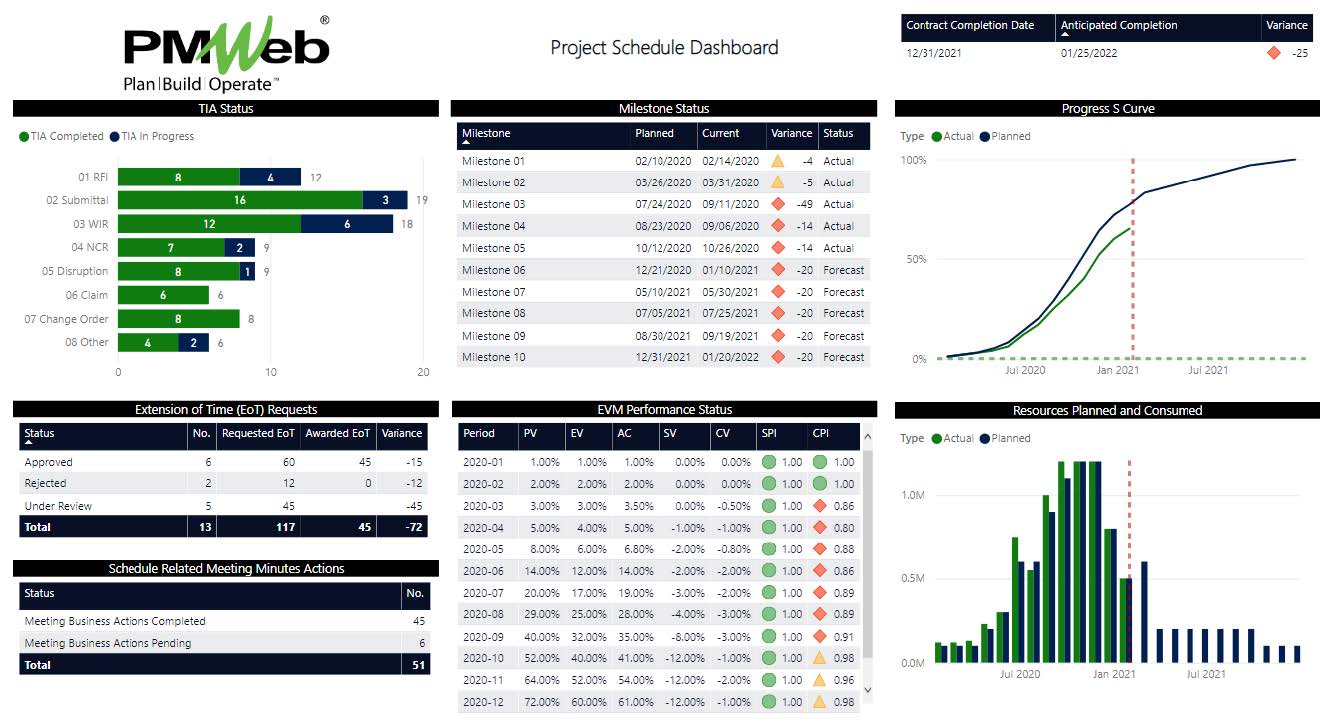
Similarly, a project dashboard can be created to summarize the transactions data of all project control business processes so they can be modeled and reported on in a format that provides the needed information in the required format. The dashboard can also append with other project management functions to provide the reader with a 360-degree project performance report. For example, it can be appended with performance information that relates to health, safety, and environment (HSE), sustainable development and others. The reader of the project dashboard can drilldown to view other dashboards and reports that detail what is being reported on.

In addition, a dashboard can also be designed to model and summarize the project control data for the organization’s complete portfolio of projects in the desired format and layout. Usually, those portfolio dashboards include a map to detail the location of those projects being reported on. The portfolio dashboard enables the reader to drilldown to each specific project dashboard.
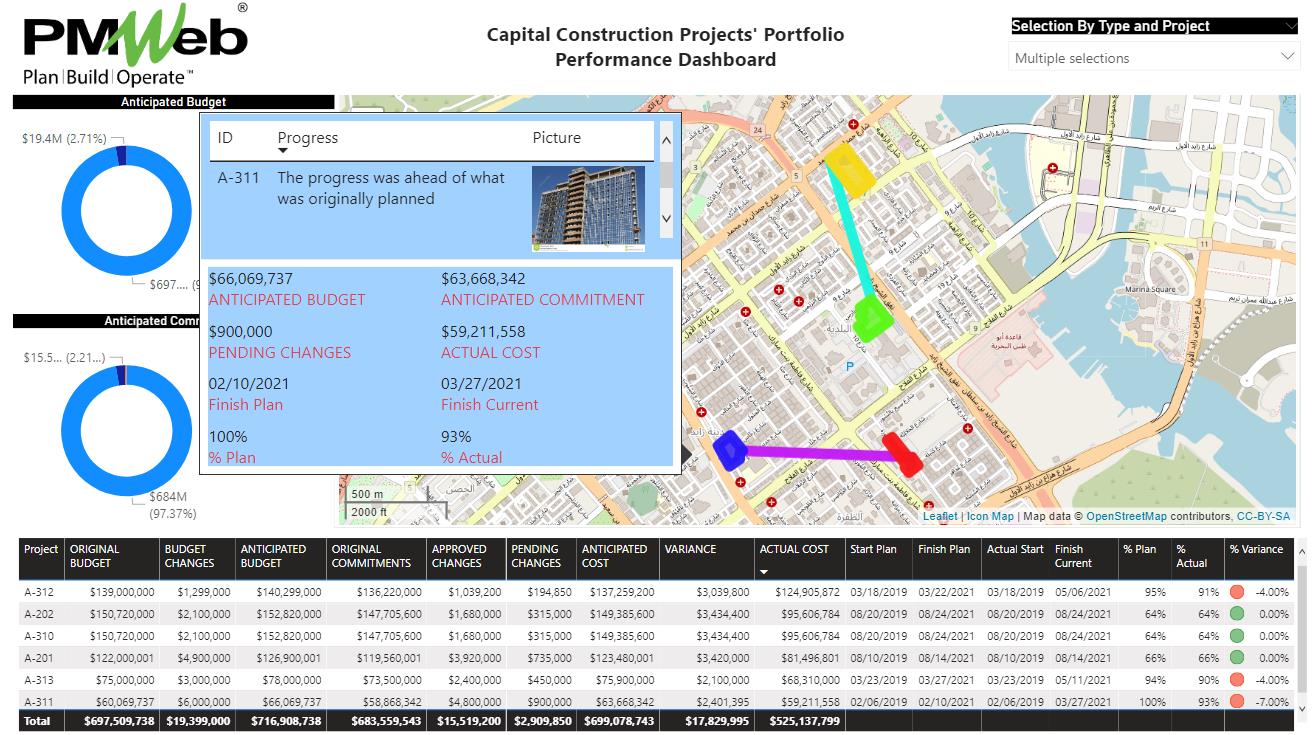
The project control team can also take advantage of the Building Information Modelling (BIM) models created by the BIM group by combining the BIM data and model with the PMWeb PMIS project control data to provide stakeholders with a better oversight of the project control performance information. For example, the Bill of Quantity (BOQ) or Schedule of Values (SOV) items used from the interim progress invoices to enable visualizing the completed work in place covered in those invoices. Other BIM and project control data reports include those for cost estimate, project schedule performance, project schedule delays among many others.
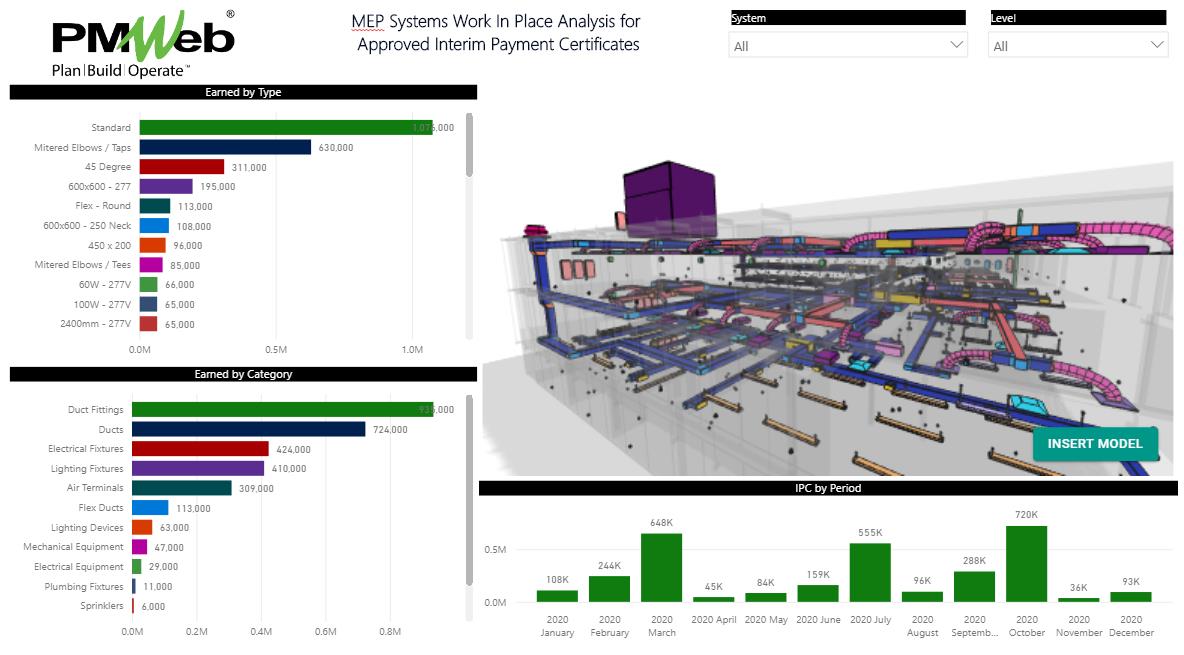
The captured project controls data also provides the trust-worthy content needed for the Machine Learning (ML) and Artificial Intelligence (AI) platforms. The analysis of this captured data not only enables having predictive, descriptive and perspective analytics but also provide those entities with the knowledge on how to improve the management of those business processes to ensure lean and sustainable capital construction projects delivery.
